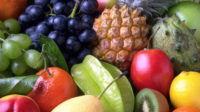Who could have predicted that leggings would once again be fashionable? Or that Beanie Babies would make a comeback? Trends can be difficult to predict. But after years of closely studying the beverage industry, experts offer their findings on the newest beverage-related trends.
Natural expansion
In recent years, coconut water has increased in popularity, says Sarah Theodore, global drinks analyst at Mintel Food & Drink, Chicago. According to the Briefing Series report by Innova Market Insights, Duiven, The Netherlands, the three main coconut water brands in the U.S. market in 2009 were Zico, O.N.E. and Vita Coco. This year, PepsiCo is expanding its Naked Juice line of coconut waters with new flavors Lychee, Mango Peach and Pineapple.
In addition to being used as a main ingredient in beverages, coconut water also is being used as a supplemental ingredient.
“I think one of the really interesting things about coconut water is that it wasn’t just used as a standalone product, but it was used as an ingredient in other things,” Theodore explains. “[For example,] a juice product with coconut water, which was used to reduce the calorie content.”
Likewise, aloe juice products are making an appearance alone and in other beverages, she says. Recently, Outernational Brands, Albertson, N.Y., introduced Vivaloe juice, which contains whole pieces of the aloe vera plant, aloe vera juice, honey and cane juice. Gourmetti Brands, Aventura, Fla., launched a ready-to-drink tea called Chantea Green Tea & Aloe Vera. The company notes that aloe vera functions to support the digestive system, boost immune function and increase the absorption of vitamins C and E.
Although aloe vera is a primary ingredient in these beverages, it’s used as a supplemental ingredient in others. For instance, Bacardi U.S.A., Coral Gables, Fla., launched Bacardi Torched Cherry, made with Barbados cherry and torched plant aloe.
Wellness lives on
The fact that consumers are looking for better-for-you products is nothing new. However, the way in which beverage-makers are adapting to their needs is something to talk about.
“If you think of carbonated soft drinks, juice and ready-to-drink teas, those categories really are still grappling with this big issue of sugar and calorie content,” Mintel’s Theodore says. “We’re seeing a lot of innovation around how to solve this problem and it’s really coming from a couple different directions, which is unique this year. Instead of just coming up with diet products, we’re seeing a few different types of solutions.”
The first solution is low- to mid-calorie beverages. Earlier this year,
Dr Pepper Snapple Group introduced Dr Pepper Ten, a 10-calorie beverage aimed at men who are not satisfied with the taste or image of diet soft drinks. The low-calorie beverage uses a blend of sweeteners to mimic the taste of regular Dr Pepper, the company says.
Just two months ago, PepsiCo began testing a reduced-sugar soft drink called Pepsi Next in Iowa and Wisconsin. The beverage is targeted at consumers who enjoy the flavor of a full-calorie soft drink, but seek less sugar. Pepsi Next offers a real cola flavor with 60 percent less sugar than the original, the company says.
Another avenue of reducing calories is to work with a less sweet, or dry, flavor profile. Theodore noted the effects of this trend in Japan, specifically. This spring, PepsiCo and Suntory launched Pepsi Dry, which has about half the number of calories as regular cola, she says. The difference between dry sodas and a low- to mid-calorie offering is that the focus is on the flavor profile rather than the calorie count, she says.
More than five years ago, Dry Soda Co. launched a line of dry sodas in the United States. Each contains between 45 and 70 calories.
“Also in the sugar and calorie arena, we’re seeing more continued innovation in the use of smaller cans and bottles that are intended for those consumers who really prefer a regular soft drink over a diet, but they want to moderate their consumption by using a portion-control package,” Theodore says.
On the heels of low-calorie and low-sugar claims is the trend toward nutritional beverages. In this case, ready-to-drink protein beverages are changing their image from a body builder’s drink of choice to a nutritional beverage for all types of consumers.
Innova Market Insights’ Briefing Series report notes that drinks are starting to be targeted at consumers looking for basic nutrients, such as protein and fiber for weight management and health benefits. Although the market is still relatively underdeveloped, there are high levels of product activity in the United States, the report states. In addition to brands like CytoSport’s Muscle Milk, VPX’s Protein Rush Shake and PepsiCo’s Gatorade, which now features high-protein Recover 03 in its G Series and G Series Pro portfolios, ready-to-drink protein beverages going mainstream now include brands such as Bolthouse Farms’ Perfectly Protein and Protein Plus ranges, Abbott’s Ensure Muscle Health, EB Performance’s Whey Juice and Whey Juice Lean, and BSN’s Syntha 6 performance range.
Working with the recession
In the beer category, there has been more activity in the sub-premium or value-priced segment, Theodore says.
“The revival of Pabst Blue Ribbon really put attention on this beer segment, which hadn’t really gotten a lot of love for a while,” she says. Most breweries had focused their marketing attention on their higher-priced premium brands. However, brewers now are starting to pay more attention to their sub-premium brands. For instance, MillerCoors launched its first national ad campaign for Keystone Light, which had previously only been advertised on a regional basis, Theodore says.
The question is: are consumers purchasing more value-priced beer simply to save money or is there another reason?
Although price is a benefit for many consumers, image and promotion also are driving these sub-premium brands, said Roman Shuster, research analyst in Euromonitor International’s Chicago office, in Beverage Industry’s 2010 Beer Report.
Some brands, like Pabst Blue Ribbon, have kicked the value-priced stigma and attained a retro and trendy reputation. This phenomenon is causing private label beer brands to join the competition. This year, Walgreens launched private label brand Big Flats that retails for $2.99 a six-pack, and Supervalu introduced Buck Range Light for $5.99 a 12-pack. Last year, 7-Eleven launched Game Day beer, which sells for $6.99 to $8.99 a 12-pack.
When it comes to alcohol in general, consumers are continuing to drink more at home to save expenses.
“The interesting thing … is some brands are trying to get around this idea of people going out less and drinking more [in their homes],” says Sebastian Concha, global drink analyst at Mintel. Kahlua, for example, launched a sweepstakes earlier this year called Delicioso Night In, encouraging consumers to invite friends, family and colleagues over for drinks and conversation. Participants could enter the contest online to win a trip to New York and Veracruz, Mexico.
“In-home consumption is arguably one of the biggest trends in the last two years,” Concha says. However, if people start to see the economy picking up, they will begin to go out more often, he says.
Merging categories
Hybrid beverages have been popular in the U.K. market, and according to Theodore, the trend is coming to the United States.
“In terms of sports and energy, it’s something that is more popular in the U.K. market,” she says. “I think there’s an argument to be made that U.S. consumers also would be receptive to that type of product.”
Traditionally, the purpose of a sports drink was to hydrate, but consumer research shows that 23 percent of energy drink users say they use them to enhance sports performance and 30 percent say they use energy shots for that purpose, Theodore says.
“This is a trend that’s based in the way consumers already are using the products and that’s why I think there’s an argument to be made that it also could be a trend here in the U.S.,” she says.
A product that crosses three categories — sports drinks, energy drinks and sparkling drinks — is Coca-Cola Enterprises Ltd.’s Powerade Energy in the U.K. The product launched in May and claims to be the first energy drink in Great Britain to launch a dual energy proposition. Powerade Energy contains fast-absorbing glucose, B-vitamins and caffeine to help deliver energy and focus, and a blend of carbohydrates and caffeine to help sustain performance, the company says.
According to Mintel’s Global New Products Database, 1,768 new beverages launched in the United States from January 2011 through July 2011. Looking at the sheer number of new products launched so far this year, it’s easy to tell that competition is fierce and pressure is high in all markets. Some trends might turn out to be fads and others could last forever. Only time will tell. BI







